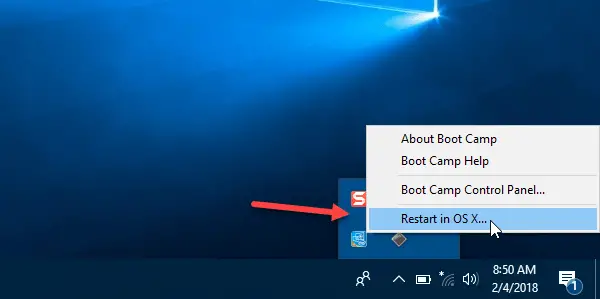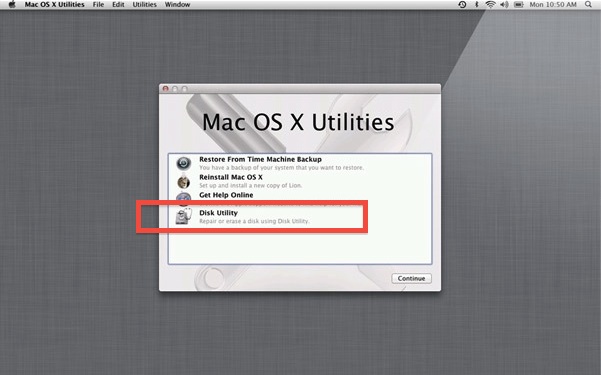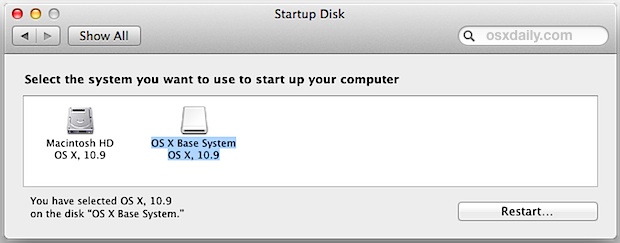
- #Button to select boot drive mac mac os
- #Button to select boot drive mac install
- #Button to select boot drive mac update
- #Button to select boot drive mac software
The only way I've been able to control which OS starts up is to restart from the Boot Camp control panel in OS X in either OS. I've tried pressing the keys from before the startup chime and just after. I've tried hold down each of the two option keys and I've tried holding down both at once. This is true whether I'm starting from the shut-down condition, or restarting. I'm finding that holding down the option key has no effect - the machine boots into whichever OS was last running. This displays icons for all available startup disks and lets you override the default setting for the startup disk that is in Startup Disk preferences (OS X) or the Boot Camp control panel (Windows), without changing that setting.ġ Restart your Mac and hold down the Option key until disk icons appear onscreen.Ģ Select the startup disk with the operating system you want to use, then click the arrow beneath the icon. You can select which operating system to use during startup by holding down the Option key. Im finding that holding down the option key has no effect - the machine boots into whichever OS was last running. 2 Select the startup disk with the operating system you want to use, then click the arrow beneath the icon. Select an operating system during startup 1 Restart your Mac and hold down the Option key until disk icons appear onscreen. You can do this in the Mac’s Disk Utility app, which is in the Utilities folder inside Applications.I have Windows 7 installed on a 15-inch Retina MacBook Pro.Īccording to Apple's Boot Camp Installation and Setup Guide, pg. If you’re trying to boot from a USB drive, choose that option.
#Button to select boot drive mac mac os
You need to erase the drive and format it to Mac OS Extended (Journaled). From the menu that pops up, choose your computer’s disc drive and press Enter. You can get model number SDCZ460-032G-G46 for $9 on Amazon.

If you don’t have an external drive and you have a USB-C Mac laptop, you could buy the SanDisk Ultra USB Type-C Flash Drive, which has a USB-C connector. Icons representing the various bootable devices that are currently connected to your Mac will be displayed. Click the lock icon in the bottom left corner, and then provide your administrator credentials. This will allow you to connect a storage device that uses a USB type-A connector. In the System Preferences window that opens, select the Startup Disk preference pane. If you have a 2015 or newer Mac laptop that has Thunderbolt/USB-C ports, you may need Apple’s $19 USB to USB-C adapter.
#Button to select boot drive mac install
The drive can be a thumb drive, hard drive, or SSD. Note: Windows 7 requires at least 16 GB of hard drive space to install but keep in mind that the this space will also. From this startup boot disk menu, you can use the mouse or the arrow keys to select the drive or partition to.

#Button to select boot drive mac software
The macOS Monterey installer software is over 12GB, so you need a USB external drive that can hold that much data. A Macs startup drive can be changed during system boot by holding down the OPTION key, start holding down Option the moment you hear the boot chime sound and while the screen is still black, this will bring up the boot drive manager. It was performed on a Mac running macOS 11 Big Sur.) Get an external drive and maybe an adapter Select the Diskimage radio button, click to select a bootable ISO image.


Next, download and launch the UNetbottin utility. Note down the device name since we will need that later. Select your USB drive from the left panel and click on Info button. (Editor’s note: These instructions are for the officially released version of macOS Monterey, not a beta. Plug a USB drive into your Mac and open Disk Utility.
#Button to select boot drive mac update
However, if you want to update the old-fashioned way, we’ll show you what you need to create a bootable macOS Monterey installation drive. Apple has a new version of macOS called Monterey that you’ll find in the Software Update pane in System Preferences.


 0 kommentar(er)
0 kommentar(er)
